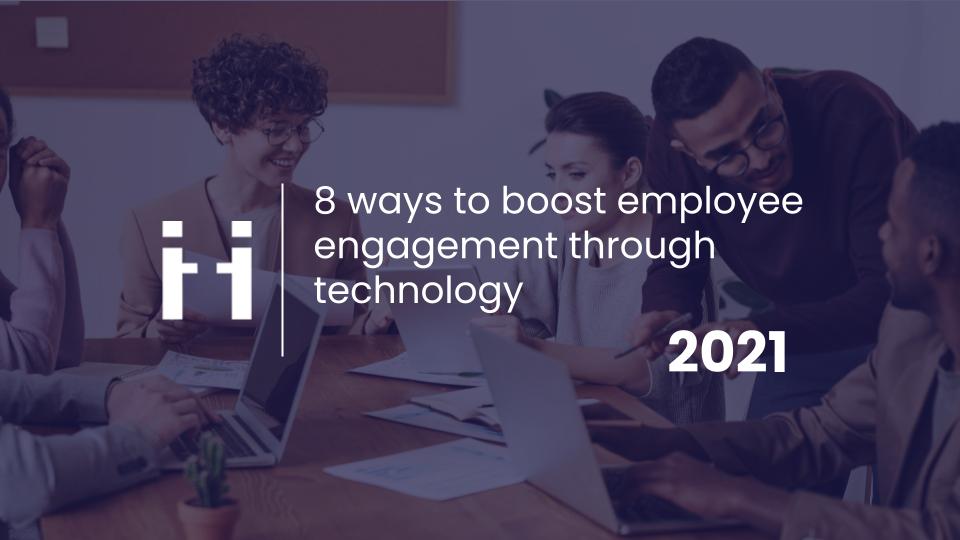
Share this article
Share this article
Many companies need new, innovative ways to boost employee satisfaction. On a monthly or yearly basis, traditional engagement approaches largely consisted of awarding praises to the best-performing staff. Managers might stand up from their desks once in a while to give a pat on the back for a job well done. These old employee engagement practices, however, no longer fit in with the new generation of talent entering the workforce, and their needs, which include the demand for instant job satisfaction.
All of this begs the question: if technology has revolutionized how businesses deal with customers, might it also reinvent how they connect with their employees? After all, everyone goes through the same basic marketing funnel: We explore prospects, analyze possible employers, commit to working for a firm, and the company either gains our trust and loyalty, or we look for another job. However, if digital tactics are not carefully implemented, instead of driving a deeper connection with companies, the opposite often occurs.
Without a question, the introduction of technology in employee engagement needs to be handled with care and subtlety, as well as thoroughly tested before being broadly used. However, the capacity to analyze employee data and compare it to past records to create prediction models greatly elevates engagement to a new level.
It is hence critical to develop practical ways that completely and transparently explain this, demonstrating how such data will be utilized to support employees and making a strong argument for their benefits and wellbeing.
At some point, colleagues often have to work together to solve complex problems. When this happens, it can be easy to feel unmotivated after long phone calls where nothing gets resolved. Providing teams with a visual support solution can help keep employees engaged and focused on challenging tasks. Visual support solutions have advanced collaborative features that make it easier for video call participants to troubleshoot problems. Features like a collaborative whiteboard, annotations for documents and photos, screen sharing, and an AR laser pointer for the live video feed help empower employees and make it easier to complete projects faster.
Although gamification isn’t as popular in the corporate sector as it was a few years ago, many companies have witnessed increased productivity and engagement as a result of its use. The value comes from the combination of psychology and technology, psychology being the many gaming principles that inspire employees and keep them involved, such as:
• Leader boards
• Badges
• Levels
• Rewards
• Challenges
The following are some examples of gamification at the workplace with some gamified mechanics or activities:
• Goals – Finish the assignment and receive a prize, such as a badge or points.
• Employees can improve their level or rank by completing activities. Leader boards show who is ‘winning’ and motivate users to compete harder.
• Employees are paired or placed in teams to solve problems, complete tasks, or accomplish other goals.
• Education – Throughout the procedure, the employee may benefit from a learning and development management system that provides tips, tricks, tests, and career development opportunities.
Employees are lured by challenges offered in a gamified format. Most of them feel delighted and self-motivated after completing these tasks and challenges. All of these are often critical in assisting employees in realizing their full potential and becoming productive.

Poor technology, in our view, can bring down even the best virtual teams—those with the most skilled staff, the best employee training or leadership, and regular interactions. Direct calls are one of the simplest and most powerful tools in the arsenal since they allow for real-time communication between two remote participants.
The following are some examples of virtual messaging systems that are regularly utilized in the workplace:
Slack – this app has a lot of features and can be integrated with a lot of other office software. It is perhaps the best service for virtual messaging in the workplace, but it is also the most expensive.
Microsoft Teams – when used in conjunction with Microsoft products, Microsoft Teams facilitates the usage of Microsoft Word, PowerPoint, and Excel. It can, however, only be utilized as a part of Office 365.
Huddle Infographic – a remote working tool or software that includes collaborative workspace, team calendars, task management, dependencies, and much more.
Apart from these, meeting and video conferencing are very important when it comes to building virtual teams in the workplace. Various applications that are great to use include Google, Hangouts, Zoom, and Skype.
Employees value genuine peer input far more than any gift card they may receive from their boss at an employee appreciation event. Indeed, this simple informal peer recognition procedure began to establish and build relationships, encourage employees, and increase employee engagement.
While peer recognition and feedback aren’t exactly revolutionary concepts, incorporating them into the DNA of an organization’s performance management culture is. It’s one thing to create a “paper” peer recognition program that’s rarely used, but it’s quite another to completely transform the performance management ecosystem to prioritize peer feedback and recognition.
The idea isn’t that managers aren’t important, or that traditional evaluations don’t have a place in the performance management process — they do. However, when a co-worker takes the time to highlight something particular that we did that made their life simpler, aided a customer, or improved a procedure, fellow employees tend to appreciate it even more. Some claim that it is this emotion that leads to and maintains true employee engagement.
Employees are motivated by workplace recognition, as it gives them a sense of accomplishment, making them feel valued for their work. Individual employee engagement that is boosted through recognition, has also been shown to promote productivity and commitment to the firm, resulting in higher employee retention.
The act of recognition sends messages to other employees about what success looks like, in addition to conveying appreciation to the respective employee. In this approach, recognition serves as an effective tool for personal reward, as well as an opportunity to promote the organization’s intended culture among other employees. Finding creative employee recognition ideas is a great way to motivate and engage your teams.
Encouraging employee voice is one of the best strategies to enhance employee engagement. Employee voice exists when everyone in the organization believes they have a voice and that their voice is heard and listened to, particularly when choices that affect them are being debated. You may develop a wealth of information, stimulate innovative thinking, and find answers to internal challenges by fostering an open and inclusive culture.
For different businesses, different approaches to employee forums work. In order to create an efficient employee forum in your company, you could:
• Create an employee board with a rotating membership where ideas may be aired out.
• Assemble a task force of employees to investigate potential solutions to the major corporate problems.
• Make sure that any campaigns seeking client feedback or suggestions are replicated within your company so that workers may submit their own ideas.
Employee wellbeing and employee engagement are inextricably linked. A firm is made up of its people, and the happier and more satisfied they are, the more productive they are, and thus the more growth a company achieves. As a result, it is safe to assume that the mental well-being of employees is directly proportionate to the company’s success.
An Employee Wellness Program can help firms in this situation by giving appropriate mental health therapy to their employees. Let’s take a quick look at the advantages of our Employee Wellness Program:
1. Employees are more likely to disclose their feelings with a stranger than with a co-worker, especially if they believe the stranger will understand them better.
2. Our specialists erase their “Mental Blocks,” allowing individuals to think more clearly.
3. Makes them an asset to your organization by assisting them in preserving long-term mental wellness.
4. It also assists managers in determining what their staff expects of them.
Annual health tests and gym memberships aren’t the only things that contribute to employee wellness. Employees who are dealing with health or financial problems are more likely to be distracted at work and unable to give their complete focus.

With the above points discussed, it is clear that employee engagement entails a gamut of workplace activities and functionalities. It is nearly impossible for an organization to independently achieve the ultimate engagement levels without a comprehensive employee engagement system in place.
Employee engagement software enables businesses to collect and track staff input, reward employee accomplishments, and encourage positive behavior. Employee engagement solutions are used to turn employee feedback into actionable insights. As per Quantum Workplace, by investing in employee engagement, 56% of companies increased their return on investment.
An organization’s technology department possesses extensive brainpower. Despite the numerous advantages of integrating technology into the employee experience, some firms lack the necessary resources and motivation to make the necessary changes. Recent trends, on the other hand, suggest that investing in closing technological gaps within organizations ensures employee happiness, which leads to increased productivity and engagement.
Digital migration has become a necessity, and technology can play an important role in making life easier for both clients and staff. All it takes is the desire to be agile, adapt, and stay nimbly anchored, as well as a willingness to experiment with new technology and see it as an ultimate enabler.